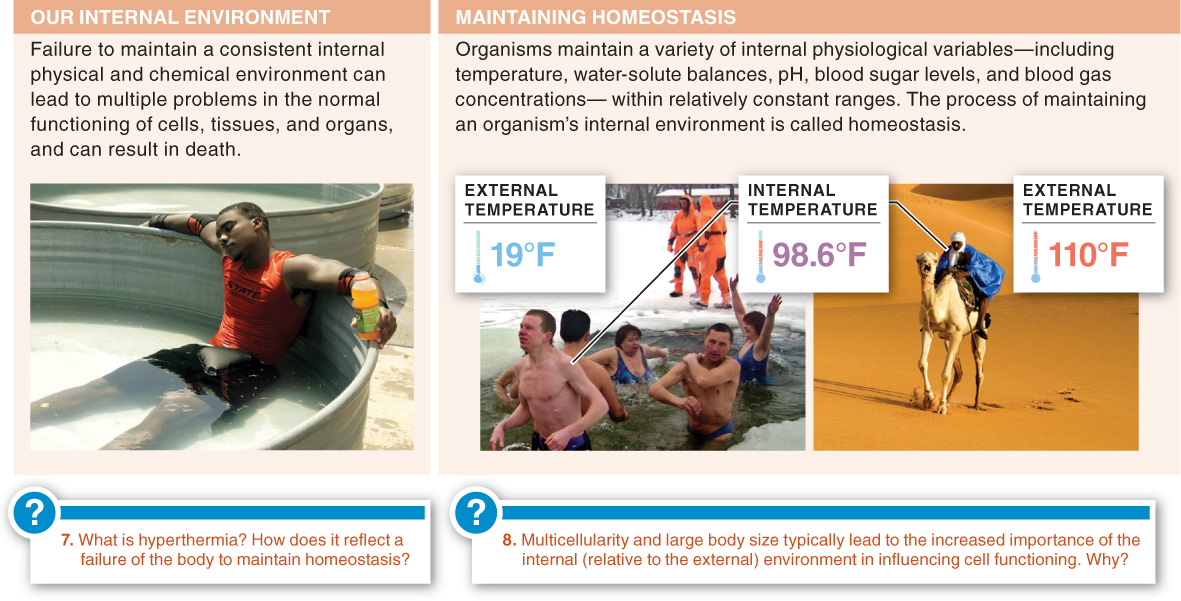20.7–20.8: Animals have an internal environment.
Although the internal environment of multicellular animals is continuously influenced by their external environment, many animals maintain homeostasis.

Question 20.24
Interstitial fluid:
- a) is found exclusively within the spinal cord, surrounding the nerve bundles.
- b) is found exclusively within the skull, surrounding the brain.
- c) is mostly water.
- d) is found exclusively within the skull and spinal cord, surrounding nervous tissue.
- e) occurs within the organelles of all eukaryotic cells.

Question 20.25
Negative feedback loops:
- a) generally lead to highly unstable internal physiological conditions.
- b) cause internal conditions to deviate from the normal range.
- c) are part of larger, positive feedback systems.
- d) rely on sensors to trigger effectors to alter an organism’s internal environment.
- e) None of the above are properties of negative feedback.

Question 20.26
A homeotherm:
- a) is an animal that maintains a constant body temperature over a wide range of environmental temperatures.
- b) is an animal whose body temperature changes when the temperature of its environment changes.
- c) is an animal whose body temperature changes in response to signals unconnected to environmental signals.
- d) is an animal who maintains homeostasis.
- e) None of the above choices are correct.

Question 20.27
A set point:
- a) is the target value or range for a physiological variable, to which it generally returns following perturbation.
- b) is a physiological state that occurs in animals called “conformers,” but not in “regulators.”
- c) can occur in fishes but not in terrestrial animals.
- d) is the target value or range for a physiological variable regulated through positive feedback, but not negative feedback.
- e) Both a) and c) are correct.
